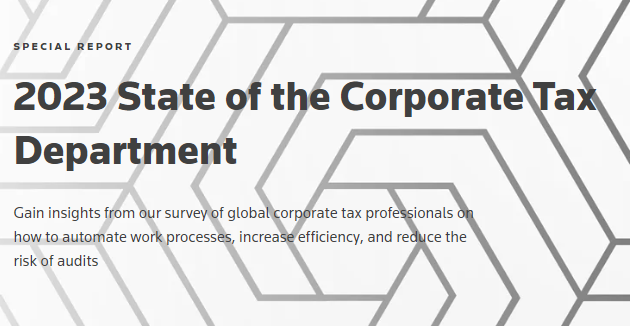Jump to:
| Moving beyond technology implementation |
| Picking the right technology is just the start |
| How to keep tax department tech effective |
From the pandemic to regulatory changes to economic shifts, numerous industries have adjusted how they operate, how they use technology, and how they engage with clients. Indeed, some of that has been good — moving industries forward by leaps rather than by incremental steps.
This has become quite apparent among corporate tax departments, many of which now are compelled to embrace new technology and innovate processes just to keep going. In fact, 70% of surveyed businesses in the 2023 State of the Corporate Tax Department report said their top four primary goals are related to operational improvements, such as improving efficiency and processes. There is one thorny issue with this, however, in that tax departments, like many industries, often see their technology as an all-purpose salve — one that miraculously is going to eradicate all the department’s problems.
Moving beyond technology implementation
While a large majority of tax department leaders acknowledge the importance of new technology solutions, many of these solutions fail to meet their expectations.
So how can tax departments move beyond just implementing tax technology? It requires understanding the role technology plays in day-to-day tax department operations, how it fits within the wider business strategy and maintaining a cycle of continuous improvement of processes.
“A critical success factor for any tax department is the ability of leadership to understand and continuously evolve the department’s technology ecosystem to ensure it is aligned to the business needs and is serving the business well. This must be done deliberately and proactively,” says Lauren Kovar, Senior Director in Professional Services for Thomson Reuters.
Too many times, tax departments view their technology as something they buy, and that’s it, she explains, instead of including it in strategic planning and utilizing a continuous improvement model to achieve operational efficiency and excellence. Particularly for under-resourced or midsize organizations, 41% of departments (according to the report) take a reactive approach to technology instead of actively planning how to maximize its effectiveness.
ReportDownload a free copy of the 2023 State of the Corporate Tax Department for more in-depth analysis. |
Picking the right technology is just the start for tax departments
For too many tax departments, the relationship with technology starts and ends with the selection and purchase of the product, Kovar says, adding that this is often done without first gaining an understanding of what the department really needs and why. It is a recipe for failure, Kovar notes, adding that this process goes beyond simply adding new tax software to your technology portfolio.
“You have to recognize that the technology is just an enabler to deliver the department’s objectives,” she adds. “Without a complete understanding of those objectives and a technology strategy, odds are the solution will not meet your needs.”
“Beyond picking the right solutions, tax departments need to ensure there is buy-in and a commitment from management toward training and regular reviews of business processes as the product changes over time,” Kovar states. “Otherwise, the effectiveness of the tool may decline, and business processes will become less efficient.” Further, tax departments should understand their people’s skills, how they interact with technology, and how they tolerate and respond to change. “You have to understand your company’s culture,” Kovar says.
Keeping tax department technology effective
As Kovar makes clear, optimization is all about things and how you use them — using the functionality of the tax technology tools you have and using them most effectively in your business processes and operations. Indeed, the more sophisticated the tool, and the less training and investment the department makes upfront, the less likely that tool will be effective, especially over time, as the business changes.
“I can’t emphasize enough how important it is to plan ahead,” she says. “To be effective and successful, tax department leaders need to know where their department is at, where they want their department to be, and how to get them there.”
It’s also important to remember that “where you want to be” can change — and your department needs to change with it, Kovar explains. “If you have everything planned and aligned prior to an unexpected change, it is much easier to pivot and adapt moving forward.”
To learn more about how to become a robust tax department, check out our new infographic, “5 traits of highly effective corporate tax departments.”
BlogHow tax technology speeds up tax compliance provision and reporting. |









